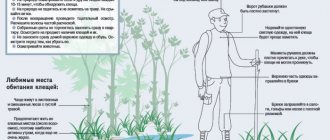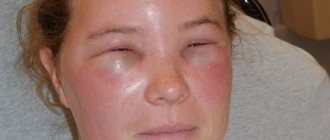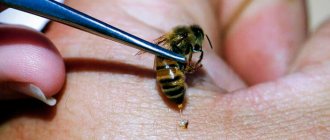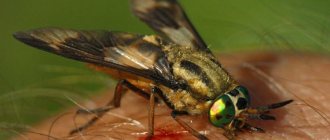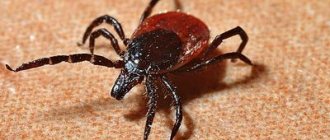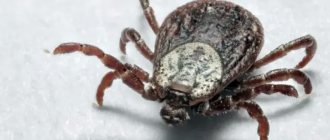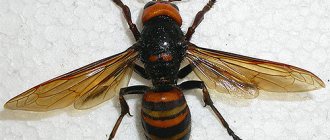People often complain that their tick bite itches, and this is not surprising, since during an attack the parasite injects poison into its victim, causing a subsequent allergic reaction. It occurs in everyone, even those who have not previously encountered allergies. Itching, burning and redness of the skin after a tick bite will be observed in any case. Therefore, when a person complains that his tick bite is itching, there is nothing strange about this, since this is a normal reaction of the body to a harmful substance.
Another thing is when the itching becomes simply unbearable and does not go away even after using antihistamines. Here you can already suspect the presence of an infectious disease or other complication. In such a situation, you should immediately consult a doctor.
Main causes of redness
If a person removes a bloodsucker from his skin incorrectly, then inflammation of the epidermis most often occurs. Usually it also affects the subcutaneous tissue. If the area after a tick bite is swollen and red, then the body is most likely infected.
The parasite's saliva contains a certain protein secretion. It acts as a kind of cement case that forms around the proboscis. This allows the tick to cling very tightly to the skin. Improper pulling out may result in tearing off the head, which will remain under the upper layer of the epidermis. Because of this, inflammation will occur, the consequence of which will be a strong purulent process. In some severe cases, an abscess develops.
Redness after a tick bite begins approximately one week after the parasite is removed. The most unpleasant is inflammation of the lymph node.
In some cases, a tumor may appear due to an allergic reaction of the body. This does not entail the occurrence of pain and purulent process. During allergies, the wound after a tick bite looks like a red spot after any other damage to the skin. Complications can only appear in the form of a small rash, which will go away on its own in a few days.
Features of a tick bite
First, the tick crawls onto the victim’s body and begins to look for a suitable place to bite; it can spend up to half an hour on this. When the right place is found, the mites cut the skin with their sharp jaws and stick to the wound with their proboscis. The parasites have several jaws, with a large number of teeth on them - this is enough to literally bite into the skin, getting to the blood vessels.
Parasites can suck blood for a long time, up to several weeks (depending on the type of tick and its gender; males of some species can eat enough in 10–20 minutes). The tick attaches itself very reliably and holds tightly, because it needs to stay in this position for several days until it is completely saturated. You can’t just remove the pest, you need special tools ( KleschKart , a special twister), but when the parasite becomes saturated, it will fall off on its own.
Feeling of intense itching
The human body can have completely different reactions to insect bites. Some people have a very hard time with the symptoms, while others experience only mild redness in the affected area and slight itching. Almost all blood-sucking insect bites are very itchy. This is how the body reacts to the substance contained in saliva.
By the strength and duration of the itching, you can understand whether complications have arisen. If the symptom manifests itself very clearly, and standard medications and traditional methods have not helped, then Lyme disease can be assumed. The second name of the disease is borreliosis.
This disease is transmitted by ixodid parasites. It is one of the most dangerous. In addition to severe itching, other symptoms are also observed. First of all, a huge erythema appears. This is a large wound (up to 50 cm in diameter), in the middle of which a white strip of skin is visible. After a while it becomes crusty. If a person has Lyme disease, he will feel not just a strong desire to scratch, but an unbearable itch, accompanied by pain and burning.
Over time, the affected area may shrink greatly, and symptoms will practically not appear, but this does not mean that the disease has subsided. The disease may continue to progress. This is why you should definitely seek the help of a doctor.
How does the bite itself occur?
Once on the human body, the tick looks for a place with thin skin and closely spaced blood vessels, and then bites. The mouthparts are designed so that the arachnid can comfortably feed itself.
On both sides of the proboscis there are two sharp chitinous processes. With them, the parasite cuts the skin, then plunges its proboscis into the wound, injects saliva and begins to suck out the blood. The sharp, curved bristles on the proboscis make it look like a harpoon, which firmly holds the tick in place while it feeds.
Allergies and the risk of contracting encephalitis
Children most often experience an allergic reaction. It manifests itself as swelling of the bitten area and slight redness. This is the body's reaction to poison. Itching and burning also appear, but rather weak. Such signs are not dangerous and will go away within a few days.
In some cases, an attack by a bloodsucker causes angioedema or leads to anaphylactic shock. This causes severe difficulty breathing, and the person quickly loses consciousness.
The most dangerous disease that can be contracted from a tick is tick-borne encephalitis. This disease quickly affects the central nervous system. If you do not seek medical help in time, the disease will lead to paralysis or even death.
The symptoms of encephalitis vary greatly, but in almost all cases the affected area of the skin becomes very swollen and red. Also, the bitten area usually hurts. Additional symptoms include:
- General deterioration of the patient's condition.
- Weakness and tremors in the limbs.
- Severe nausea and vomiting.
- Increase in body temperature up to 40 degrees.
- Severe headache.
If these symptoms appear, you should immediately go to the hospital. There they will carry out the necessary tests that will confirm or refute infection with encephalitis.
Precautionary measures
Ticks usually begin to become active in May and lead an active lifestyle until September. The peak of their life activity occurs in the summer. Before heading to an area where there are ticks, it is advisable to get an anti-encephalitis vaccine about 30-40 days in advance. You should also take with you special tools, which are divided into three main groups:
- Repellents. They are good at repelling ticks and other insects.
- Acaricides. They kill almost all types of blood suckers.
- Insecticidal and repellent agents. These are substances that can both kill and repel insects.
While in the forest or areas with plantings, you should not go into wet and shaded areas where there is dense vegetation. Unless absolutely necessary, you should not climb into raspberry and aspen forests. Parasites are very common in such places. Quite a lot of ticks can be found on the sides of forest paths.
To enhance safety, it is best to stick to bright places that do not have a large number of bushes - for example, pine forests, open clearings that can be seen. It should be remembered that the daily peak of activity occurs in the morning and evening. In rainy or hot weather, insects are inactive.
You should also choose the right clothes before going on a hike. It is better if it is light in color, as this allows you to quickly identify the parasite. It is advisable to choose outerwear from Bolognese fabrics. A shirt or T-shirt must be tucked into pants.
GENERAL INFORMATION ABOUT TICKS
Ticks are characterized by seasonality.
The first cases of attacks are recorded in early spring, when the air temperature rises above 00 C, and the last cases - in the fall. Peak bites occur from April to July. Bloodsuckers do not like bright sun and wind, so they lie in wait for their prey in damp, not too shady places, in thick grass and bushes.
During the bite, the parasites inject an anesthetic substance, like mosquitoes, so the suction goes unnoticed. Favorite places to bite are the neck, the area behind the ears, armpits, groin area, and elbow creases.
Attention. Not all ticks carry diseases. But even sterile parasites, and there are 85–90% of them, can cause allergic reactions.
The parasites are not picky when choosing a hunting object; they bite everyone who gets in their way - birds, small and large animals, humans.
Treatment of the bite site
The bite site is usually treated after the tick is removed from under the skin. If the attack occurred in nature or at home, then you can use any alcohol-containing products, hydrogen peroxide, as well as iodine or brilliant green. It is also acceptable to use antibiotics as prescribed by a doctor. They should thoroughly wash the wound. The drug must be mixed in boiled water. If you have an ointment containing an antibiotic, you can apply it to and around the affected area. It is advisable to use vodka or perfume in extreme cases.
All areas of skin and clothing that came into contact with the bite site must be disinfected. It is also advisable to remove the insect not on your own, but with the help of medical professionals.
After extracting the parasite, apply:
- Anti-inflammatory ointments. They are used if severe pain and itching occur. Diclofenac and Diclak gel are considered effective.
- Venotonic gels. They accelerate the resorption of seals and also relieve the inflammatory process. Such gels are classified as vasoconstrictors. The first three days are applied several times.
- Hormonal ointments. They can only be used as prescribed by a doctor, for severe inflammation.
Do not use ointments or gels that contain warming ingredients, such as bee venom, tar, various pepper extracts or snake venom. Such drugs will only increase inflammation.
What to do if the itching does not stop
Itching cannot be completely eliminated until the allergens are completely eliminated from the body. As a temporary measure, you can relieve the unpleasant symptom by using antihistamines for oral and external use, but remember that consultation with a doctor is mandatory and cannot be postponed until later.
It is necessary to consult a doctor in any case of a tick bite - a specialist will assess your condition, prescribe tests and give recommendations on further actions.
Basic ways to prevent a bite
A vaccine a few weeks before going into the forest will help avoid unpleasant consequences after a bite. It must be done in advance, since after infection the drug can no longer be used. Vaccination is indicated only in cases where a person goes to an area with an increased risk of ticks, and also works in the forest.
Choosing the right clothes is very important. It should have long sleeves. Shorts should not be worn. The best protection for your head is a hood. Thermal underwear is also a good option, as it will prevent parasites from getting into secluded places.
When going to the forest, you should take with you repellents and remedies that will be necessary in case of a tick bite. When moving through the thickets, it is advisable to stick to the middle of the paths. Do not go into tall grass and avoid large bushes.
Does everyone develop Lyme disease after a tick bite?
Of course not, because not all ticks carry diseases. Insects become infected only after contact with infected animals (mice, chipmunks, shrews, etc.) or grow from eggs laid by an infected female. It is impossible to predict which tick bit a person (infected or not). Therefore, in order to avoid the development of the disease, it is recommended to undergo a laboratory examination 2-4 weeks after the bite and, if necessary, begin treatment as quickly as possible. “Bitten by a tick? Get checked!”
Reviews from victims
You can get many diseases from ticks. I was vaccinated against encephalitis back in my student days, and I still haven’t gotten sick. A colleague of mine contracted Lyme disease several years ago. The first symptoms were a severe headache and a very high fever. After a while, severe pain in the limbs developed. The treatment took place in St. Petersburg. A few weeks later everything went away, there seemed to be no consequences left.
Alik
Ticks have bitten me many times already, as I often go to my dacha, which is located in the forest. I always managed on my own. They extracted bloodsuckers using sunflower oil. After that I always took antibiotics. But one of my friends died of encephalitis after much suffering. They treated me for everything except this. You should always bring the tick in for analysis.
Elena
I was attacked by a parasite in the botanical garden last year. I noticed it only on the second day. We went to the hospital, it turned out to be closed. It was Sunday then. Then in another hospital they pulled out this tick and threw it away. No checks or analyzes were done. Everything worked out fine.
Alice
Tick removal oil never works.
He just dies, but doesn’t get out. In the ambulance they advise to unscrew it with tweezers. I can’t remember exactly which way. Then, you must have the parasite tested for encephalitis. Andrey
What does a tick look like?
The size of a female adult tick is 5 mm, males are slightly smaller. They have an oval shape, a proboscis, four pairs of legs, and a brown-black color. They feed on the blood of animals, birds, and humans. They reproduce by laying eggs, which hatch into white, small (0.5 mm), almost invisible larvae, which then grow into nymphs 1-2 mm long. Only after this does the tick turn into an adult insect. The danger is that both larvae and nymphs, like adult insects, attack people and can carry borreliosis (Lyme disease). But at the same time they are practically invisible, unlike adult males and females. This is why some patients suffering from borreliosis do not remember the moment of the bite. The favorite places for ticks to suction are those where the skin is thin: under the arms, in the groin, under the knee, on the scalp. Clothes and pets (such as dogs) should also be checked.

